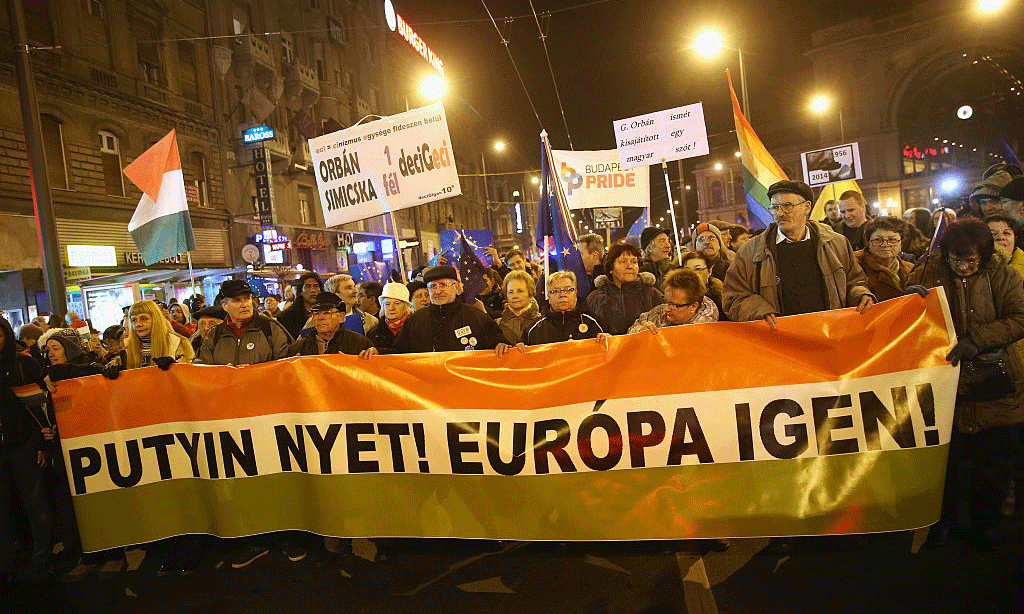Opinion Advocates for ideas and draws conclusions based on the author/producer’s interpretation of facts and data.
Shapeshifting: Discovering the “We” in Mixed-Race Experiences

Sometimes you don’t know what you’ve been longing for your whole life until you experience it. As a mixed-race woman, I never knew how much it would mean for me to finally sit in a room full of other multiracial women until, at age 45, I taught a creative writing class called Shapeshifting: Reading and Writing the Mixed-Race Experience. I was nervous because I’d never attended something like this myself. And yet, sometimes when it becomes clear that you need something that doesn’t already exist, you have to create it yourself.
I once considered myself to be a shy person, afraid to speak in public. However, my close friends knew me differently, and at my core I knew myself differently too. While I remained quiet in high school, college, and beyond, in intimate spaces I could be bold and funny. When I was younger, I used to think that my insecurities came from my youth or my gender. But the older I’ve gotten the more I’ve also come to question how much of my conditioning— to feel quiet, silent, and invisible—has come from my mixed-race heritage?
I am an Asian American woman. I am also mixed race—my father is White and my mother is Chinese. And I have many questions.
What does it feel like to grow up and never see reflections of yourself or your family in the shows you watch or the books you read, or to rarely see yourself in positions of power?
For mixed-race people, especially those of us who have one White parent, the answers to questions of identity can be confusing to sort out.
What does it feel like to sense you don’t exist in the outside world, or to never have been given a language—a book of history, a collection of stories, the perspective of an elder—to help name the lineage you are a part of, who you are in relationship to America’s history of racism, or who you are within the rules about who is Black or Asian or Native American or Latinx or White?
How much blood does one need to be able to claim an identity? One half, one quarter, one eighth, one sixteenth, one drop?
Learning more about the history of our nation’s formation has taught me that the answers to questions of identity depends on how much White people have wanted to leverage their control over others’ bodies or lands, and how beneficial it was to claim you as their own. Each racial and ethnic community has a unique relationship to history’s shaping of mixed-race identities, and our absorption into or exclusion from Whiteness depends on the shifting of the White supremacy culture’s needs. Asian Americans, for example, were held up as “model minorities” to prove America’s great myth of meritocracy and used as a wedge against Black people: ‘see, anyone can succeed here if they just try.’ But we have also been expelled from this country, put in concentration camps, perpetually seen as foreign, or dangerous, and most recently, blamed for the spread of a deadly virus.
For mixed-race people, especially those of us who have one White parent, the answers to questions of identity can be confusing to sort out. Many of us who grew up in majority-White communities, have unconsciously been taught to aspire to Whiteness. Conversely, others have been encouraged to deny all ties to Whiteness—or we choose to lean in that direction ourselves once we realize how much we’ve been conditioned to see ourselves as inferior or lacking by the standards of White supremacy culture. But whether we are denying our “color” or denying our “Whiteness,” these false binaries can in turn lead us to internalize the notion that part of us is damaged, inferior, or too shameful to be spoken about. They can make us feel like we have to be shapeshifters to be accepted or belong.
I grew up attending an integrated—yet also highly segregated—high school in Seattle, during the era of Rodney King, and in an environment that taught me to see conversations around race through the binary of Black and White. As a mixed-race Asian girl, I had already learned by then to assimilate and identify with my White peers. It wasn’t until I started college that I realized how much I needed to reclaim my mother tongue of Chinese, a language I grew up speaking with my mother and grandmother as a young child but grew distanced from as an adult. Leaving college, then traveling and living in China for more than three years helped me to reclaim that part of me—as much as it also taught me that the Chinese saw me as a Westerner, as well as how American I truly was.
Most mixed-race people never know what it means to be part of a community where we can feel relaxed or have a sense of belonging when it comes to race.
Back in the U.S., I continued to interrogate my racial identity, but now, once again through an American lens. Here, I am seen by most people as Asian. Here, the terms of how many saw me had changed again—my “otherness” set up against Whiteness, as opposed to against “Chineseness.” Here, it became increasingly crucial for me to drill deeper into my own silence and complicity when it comes to anti-Blackness, implicit bias, and inherited wealth. Attending racial equity trainings, I grew familiar with the practice of dividing the room into two caucusing groups—one for people of color, and one for White people.
By now, I clearly knew I was not White, but I still did not feel comfortable taking up space discussing my identity issues or light-skinned privilege in a group dedicated to people of color. And yet, I also knew that I too had experienced racial pain. I realized that to overcome my own silence around others’ oppression, I needed to give voice to mine too.
Ever since college, I have written privately about my racial in-betweenness, but after returning from China and eventually attending trainings, I developed more of a contextual lens; I learned to see where my struggles aligned with other people of color, and where they diverged. Recently, as a creative writing teacher, I have begun to offer spaces for other mixed-race folks to write about their experiences. I needed to express things privately and I needed share in community, because I realized that shame can only live in silence. Once we voice something in a safe space and we feel witnessed and heard, shame can start to dissipate.
Most mixed-race people never know what it means to be part of a community where we can feel relaxed or have a sense of belonging when it comes to race. Even in our own families, we often look different from our parents or relatives. We perch at the edge of other communities who may tentatively welcome us, but deep down we suspect we don’t fully belong. We have grown up with so many reminders of how our experiences mark us as outsiders, that we have started to distrust ourselves too.
I’m here to tell you, after 25 years of writing and interrogating my own roots and identity, that it doesn’t have to be this way. But where do we begin, especially if we barely know any other mixed-race people?
We can start by reading others’ stories. There aren’t enough of them out there, but that is changing. And we can also begin, at any stage of life, to write our own accounts. In this way, we can begin to name how our experiences are similar to others, for example, how certain traits that we have internalized as our own private maladies may actually stem from larger systemic structures. Furthermore, we can name where our experiences diverge, where our intersectional identities and relative privileges result in our unique stories. We can join affinity groups online, we can find therapists who mirror our origins, we can open up about our deepest vulnerabilities and fears. We can learn to recognize how sometimes shapeshifting harms us, and other times it opens pathways to new conversations. We can begin, one small step at a time, to claim our voice and story as important, and an essential part of contributing to the conversation as we name the dual myth and reality of race.

|
Anne Liu Kellor
is a mixed-race Chinese American writer, editor, and teacher based in Seattle. Her essays have appeared in Longreads, Fourth Genre, Witness, New England Review, Entropy, The Normal School, Literary Mama, and many more. She has received fellowships and support from Seventh Wave, Hedgebrook, Jack Straw Cultural Center, 4Culture, and Hypatia-in-the-Woods. Anne teaches writing workshops at the Hugo House and beyond and loves to support women and BIPOC writers in finding their voice and community. Her memoir, Heart Radical: A Search for Language, Love, and Belonging, is forthcoming in September. She can be reached at www.anneliukellor.com
|







